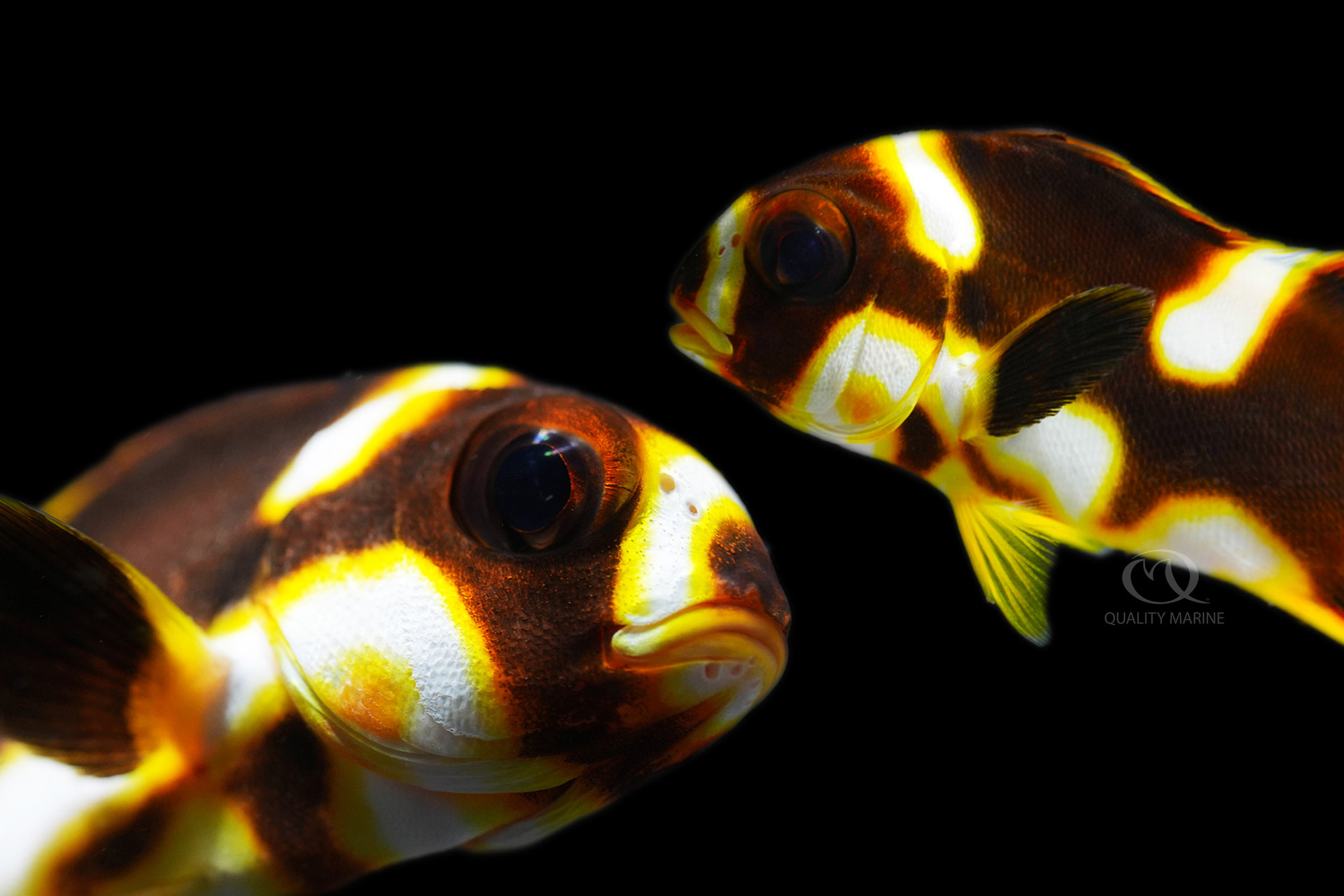The Grunt of Many Names

There is a fish with dozens of common names world wide, and is a stunning beauty, yet we only infrequently see them in captivity. The fish known to science as Plectorhinchus lineatus, is called Orientalis Sweetlips, Black-striped Sweetlips, Diagonal-banded Sweetlips, Goldman's Sweetlips, Lined Blubberlips, Lined Sweetlips, Many-lined Sweetlips, Oblique-banded Sweetlips, Oblique
Thicklip, Silver Banded Sweetlip, Yellow-banded Sweetlip and more than 3 dozen other names in various languages around the pacific rim.
This Sweetlip can be found throughout the entirety of the tropical Indian and Pacific oceans where juveniles will generally be found singly in very shallow reef habitats and adults can be found schooling in sync over lagoons and seagrass beds at night foraging for small invertebrates and fish. During the day, these fish will hide in adjacent reef or rocky habitats. They are almost always found in fairly shallow water. Throughout most, if not all, of its range, it is considered a delicacy and is an important food fish; generally caught by handline or speared at night.
Captive husbandry of this gorgeous animal has some catches. First, they get big. This will be an active fish that is likely to reach 15 to 20 inches and this will happen fairly quickly. As a result We usually import these for public aquariums, or stores installing massive aquariums. Anything under 300 gallons shouldn't be considered for this fish long term. As a fish that is active, and grows quickly, they have fairly intense caloric requirements. They will need a lot of food, and since they are naturally nocturnal and like live food, they can be tricky to get segued onto prepared foods. We suggest adding some live food for them to forage, feeding them late in the evening and early in the morning until they start to adapt to your schedule better. They are a peaceful fish that shouldn't give you any problems with compatibility. They are low risk with corals, but as a large active fish, used to foraging, they can be a bit of a “bull in a teashop” meaning that as they root around, corals could get moved or toppled. This means they are not a perfect fit for reef aquariums with the exception of extraordinarily large and well cemented ones. Shrimp, clams, snails and crabs are all on the menu.
After all that, it should be noted that once acclimated, they are actually quite hardy, and gorgeous throughout their development. Frequently fish that dramatically change color and patterns during the course of their lives get more boring once they reach adulthood, this is NOT the case with Plectorhinchus lineatus, they go from gorgeous to stunning and everything in between is just as pretty. If you have the space, these are definitely a fish you should consider. Ask your LFS to source you one from Quality Marine. If you don't have the space, they can be seen in public aquariums all over the country; you should definitely book a trip to the one closest to you and see this fish in person!
http://www.marinespecies.org/aphia.php?p=taxdetails&id=273489
https://www.inaturalist.org/taxa/134158-Plectorhinchus-lineatus
https://www.monaconatureencyclopedia.com/plectorhinchus-lineatus/?lang=en
https://www.fishbase.de/summary/Plectorhinchus-lineatus.html